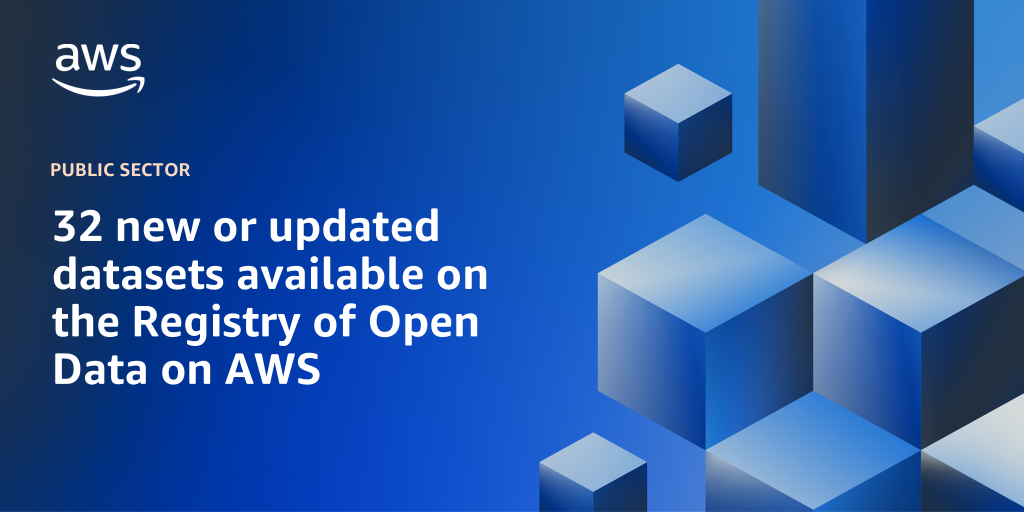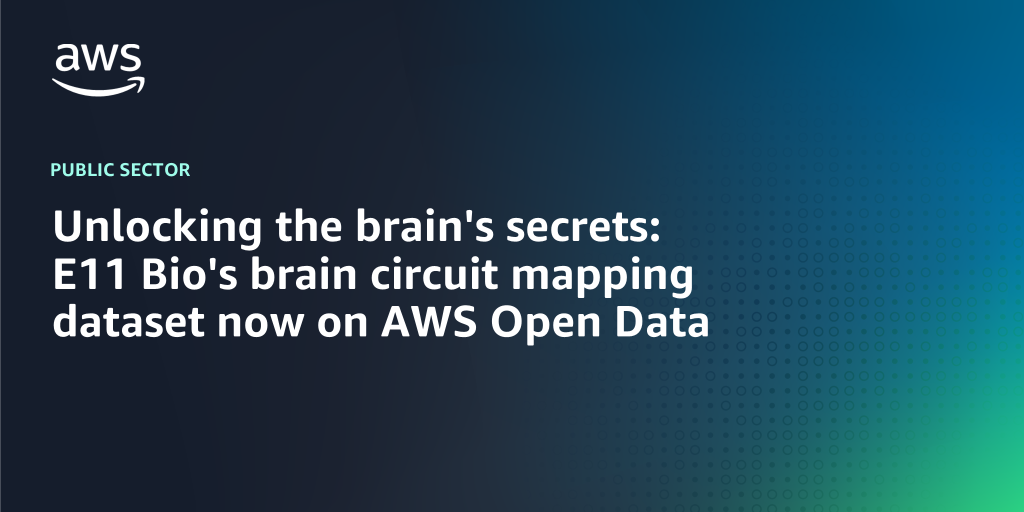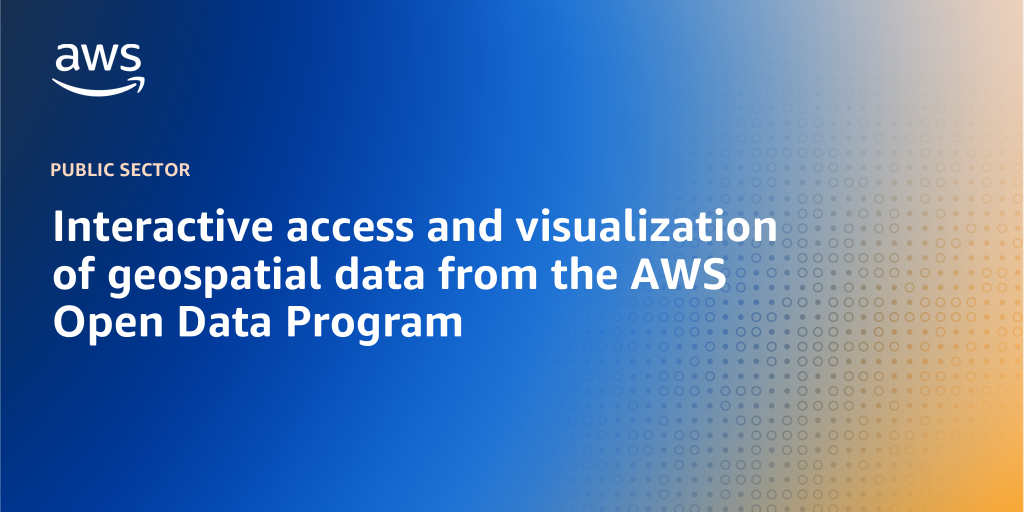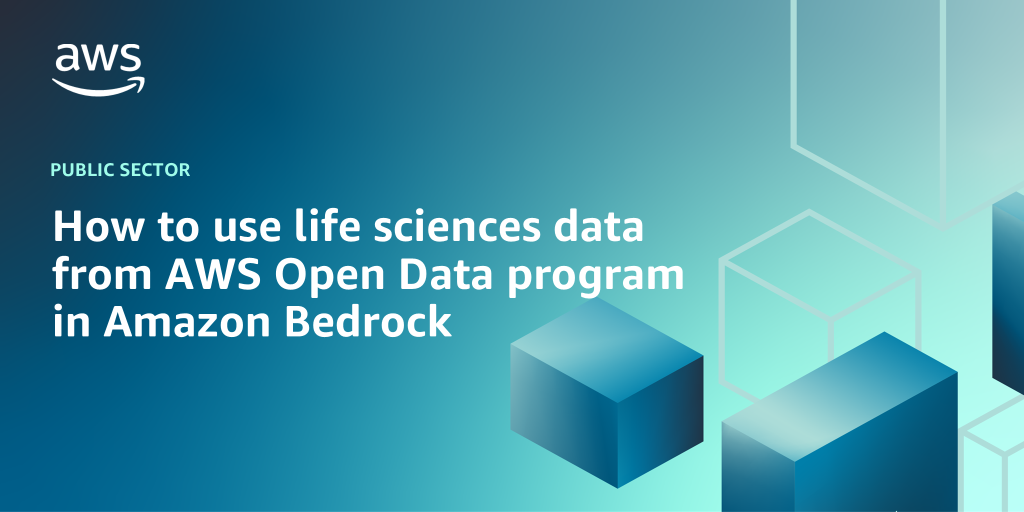AWS Public Sector Blog
Tag: datasets
32 new or updated datasets available on the Registry of Open Data on AWS
The AWS Open Data Sponsorship Program makes high-value, cloud-optimized datasets publicly available on Amazon Web Services (AWS). AWS works with data providers to democratize access to data by making it available to the public for analysis on AWS; develop new cloud-based techniques, formats, and tools that lower the cost of working with data; and encourage the development of communities that benefit from access to shared datasets. Through the AWS Open Data Sponsorship Program, customers are making over 300 PB of high-value, cloud-optimized data available for public use.
82 new or updated datasets available on the Registry of Open Data on AWS
The AWS Open Data Sponsorship Program makes high-value, cloud-optimized datasets publicly available on AWS. AWS works with data providers to democratize access to data by making it available to the public for analysis on AWS; develop new cloud-based techniques, formats, and tools that lower the cost of working with data; and encourage the development of communities that benefit from access to shared datasets. Through the AWS Open Data Sponsorship Program, customers are making over 300 PB of high-value, cloud-optimized data available for public use.
Unlocking the brain’s secrets: E11 Bio’s brain circuit mapping dataset now on AWS Open Data
Today, we are excited to announce the release of E11 Bio’s brain tissue dataset on AWS as part of the Registry of Open Data on AWS (E11bio PRISM). Read this post to learn more.
Interactive access and visualization of geospatial data from the AWS Open Data Program
Open data is reshaping how we understand and respond to global challenges. From climate change to disaster recovery, the ability to access and analyze large-scale geospatial datasets is critical for scientific research, policy-making, and real-world applications. Leading the charge are several open data initiatives designed to lower access barriers and accelerate innovation: Open Data on AWS, the Amazon Sustainability Data Initiative (ASDI), and the Maxar Open Data Program on AWS. Together, these programs demonstrate the power of cloud-enabled open data to democratize access to geospatial information, promote global collaboration, and drive real-world impact. In this post, we demonstrate how to explore and visualize these datasets using interactive web applications and Jupyter notebooks.
How to use life sciences data from AWS Open Data program in Amazon Bedrock
In this post, we discuss how to use datasets in the Registry of Open Data on AWS with Amazon Bedrock Knowledge Bases. With Amazon Bedrock Knowledge Bases, you can give foundation models (FMs) and agents contextual information from private and public data sources to deliver more relevant, accurate, and customized responses.
66 new or updated datasets available on the Registry of Open Data on AWS
Through the AWS Open Data Sponsorship Program, customers are making over 300 PB of high-value, cloud-optimized data available for public use. All publicly available datasets can be found in the Registry of Open Data on AWS and are now also discoverable on Exchange. This quarter, AWS released 66 new or updated datasets. Read this post to learn more.
How to use data from the AWS Open Data program in Amazon Bedrock
Many government agencies, like the National Oceanic and Atmospheric Administration (NOAA), participate in the AWS Open Data Sponsorship Program. In this post, we discuss how to use NOAA datasets in the Registry of Open Data on AWS using Amazon Bedrock Knowledge Bases.
53 new or updated datasets available on the Registry of Open Data on AWS
The AWS Open Data Sponsorship Program makes high-value, cloud-optimized datasets publicly available on Amazon Web Services (AWS). AWS works with data providers to democratize access to data by making it available to the public for analysis on AWS; develop new cloud-based techniques, formats, and tools that lower the cost of working with data; and encourage the development of communities that benefit from access to shared datasets. The full list of publicly available datasets are on the Registry of Open Data on AWS and are now also discoverable on AWS Data Exchange. This quarter, AWS released 53 new or updated datasets and you can learn more about them in this post.
39 new or updated datasets available on the Registry of Open Data on AWS
The AWS Open Data Sponsorship Program makes high-value, cloud-optimized datasets publicly available on Amazon Web Services (AWS). AWS works with data providers to democratize access to data by making it available to the public for analysis on AWS; develop new cloud-based techniques, formats, and tools that lower the cost of working with data; and encourage the development of communities that benefit from access to shared datasets. Through this program, customers are making over 100 petabytes (PB) of high-value, cloud-optimized data available for public use. This quarter, AWS released 39 new or updated datasets.
Accelerating data processing for IRCC with Amazon EC2 instances
Immigration, Refugees, and Citizenship Canada (IRCC) faced a significant challenge: the need to perform complex fuzzy string matching across two different datasets. IRCC embarked on a transformative project that redefined its data processing capabilities and showcased the power of cloud computing in overcoming substantial data challenges. Instead of dealing with months of undifferentiated heavy lifting activities, IRCC successfully used Amazon Elastic Compute Cloud (Amazon EC2) instances to complete the work in a only few days. Read this post to learn more.









